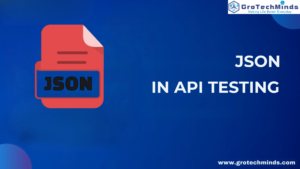

Top 20 Interview Questions and Answers for a Performance Testing Role
Introduction:
Performance testing is a crucial aspect of software development, ensuring that applications perform well under expected load conditions. Here are some 20 important interview questions for performance testing, designed to test the depth of your knowledge and experience in the field.
1. What is the difference between load testing and stress testing?
Load testing evaluates how a system performs under expected load conditions, ensuring it can handle the anticipated number of users. Stress testing, on the other hand, tests the system’s limits by pushing it beyond normal operational capacity to identify breaking points and how it recovers from failures.
2. How would you determine the performance of requirements for a new application ?
Performance requirements are determined through discussions with stakeholders, understanding user expectations, analyzing historical data, and studying similar applications. These requirements should cover response time, throughput, resource utilization, and scalability.
3. Explain the significance of throughput in performance testing.
Throughput measures the number of transactions processed by the system in a given time frame. It is significant as it indicates the system’s capacity to handle concurrent user requests and data processing, which is critical for ensuring user satisfaction and operational efficiency.
4. How do you identify performance bottlenecks in an application?
Performance bottlenecks can be identified by monitoring system metrics such as CPU usage, memory consumption, disk I/O, and network latency during load testing. Tools like JMeter can help visualize and pinpoint the exact areas where performance issues occur.
5. Describe a scenario where you had to optimize a performance issue. What steps did you take?
In a previous project, a web application had slow response times under peak load. I started by profiling the application to identify slow database queries. After optimizing the queries and indexing critical columns, I improved caching strategies and optimized server configurations, which significantly enhanced performance.
6. What is the role of a performance testing tool like JMeter in your testing process?
JMeter is used to simulate multiple users and measure application performance under load. It helps in scripting various test scenarios, generating load, and collecting performance metrics such as response time, throughput, and error rates. This data is crucial for identifying and addressing performance issues.
7. How do you ensure your performance tests are realistic and meaningful?
To ensure realistic and meaningful performance tests, I would use real-world usage patterns, simulate various user types, incorporate think times, and replicate the production environment as closely as possible. Additionally, I would also validate test scenarios with stakeholders to ensure they align with business objectives.
8. What is a performance baseline, and why is it important?
A performance baseline is a set of performance metrics collected from a stable system under normal load conditions. It serves as a reference point to compare future test results, helping to identify performance deviations and evaluate the impact of changes or optimizations.
9. Can you explain the concept of peak load and how you test for it?
Peak load refers to the maximum number of concurrent users or transactions that a system is expected to handle. To test for peak load, I would gradually increase the load on the system until it reaches its threshold, monitoring performance metrics to ensure the system maintains acceptable performance levels without failures.
10. What strategies do you use to simulate a large number of virtual users in your tests?
To simulate a large number of virtual users, I would use distributed testing with multiple load generators, employ cloud-based testing services, and ensure efficient scripting to minimize resource overhead. I would also configure appropriate ramp-up and ramp-down periods to mimic real-world traffic patterns.
11. How do you handle data setup and cleanup in performance testing?
Data setup involves creating a realistic dataset that mirrors production data, including user accounts, transactions, and other entities. Cleanup ensures the environment is reset to its initial state after each test to prevent data contamination. I would use automation scripts that are used for both setup and cleanup to ensure consistency and efficiency.
12. What is a performance testing life cycle, and what are its key stages?
The performance testing life cycle includes planning (defining objectives, requirements, and test strategies), design (creating test scripts and scenarios), execution (running tests and collecting data), analysis (interpreting results and identifying bottlenecks), and reporting (documenting findings and recommendations).
13. How do you measure and interpret latency in performance tests?
Latency is measured as the time taken for a request to travel from the client to the server and back. It is interpreted by analyzing round-trip time and its impact on overall response time. High latency can indicate network issues or server delays, requiring further investigation and optimization.
14. Describe a situation where you had to balance performance and cost. What approach did you take?
In a project with budget constraints, we needed to optimize performance without excessive hardware upgrades. I focused on application-level optimizations, such as code refactoring, query optimization, and effective caching, which improved performance within the existing infrastructure, balancing cost and performance.
15. Explain how you would test the scalability of an application.
To test scalability, I would perform load testing with gradually increasing loads to determine how the application handles growth. I will test horizontal and vertical scaling by adding more servers or increasing resources and monitor performance metrics to ensure the application can handle increased load without degradation.
16. What is the importance of user perception in performance testing, and how do you measure it?
User perception is crucial as it reflects the end-user experience. It is measured through response times, load times, and user satisfaction surveys. Synthetic monitoring and real user monitoring tools provide insights into how users perceive application performance, guiding optimizations to enhance their experience.
17. How do you handle performance testing for mobile applications?
For mobile applications, I would use tools like JMeter with mobile plugins, BlazeMeter, and mobile-specific testing tools like Appium. I will consider factors like network variability, different device capabilities, and user scenarios to ensure comprehensive performance testing that mirrors real-world mobile usage.
18. Describe your approach to testing performance in a microservices architecture.
In microservices architecture, I focus on testing individual services and their interactions. I would use tools like JMeter, Gatling, and Locust for load testing, and employ service mesh technologies like Istio for monitoring. I would also simulate inter-service communication and monitor performance metrics to identify bottlenecks and optimize service interactions.
19. How do you use performance monitoring tools during production to ensure continued performance?
Performance monitoring tools are used to continuously monitor key metrics in production. We can configure alerts for anomalies, and reports should be analyzed regularly to detect trends and potential issues. This proactive approach ensures ongoing performance and quick resolution of any issues.
20. What are some common performance issues you have encountered, and how did you resolve them?
Common performance issues include slow database queries, high memory consumption, and network latency. To resolve these, I optimized database queries, implemented efficient indexing, used caching strategies, optimized code for memory management, and ensured proper network configurations. Regular profiling and monitoring help in proactively identifying and addressing such issues.
Conclusion
This blog on 20 interview questions and answers cover a broad range of topics in performance testing, from basic concepts to advanced strategies. Remember to practise, stay updated with the latest trends in Performance Testing with JMeter ,and maintain a positive attitude throughout your interview process. They are designed to test your knowledge, experience, and problem-solving abilities, providing a comprehensive assessment of their suitability for a performance testing role.
Also read:
Consult Us


















